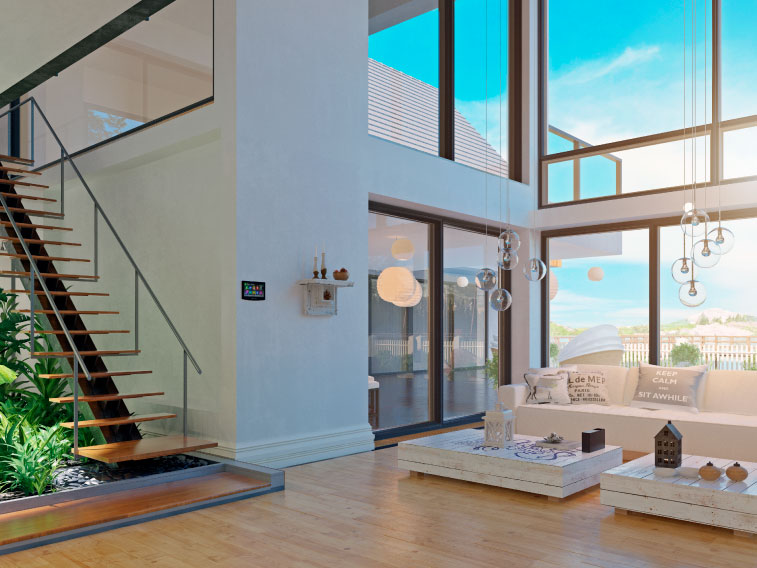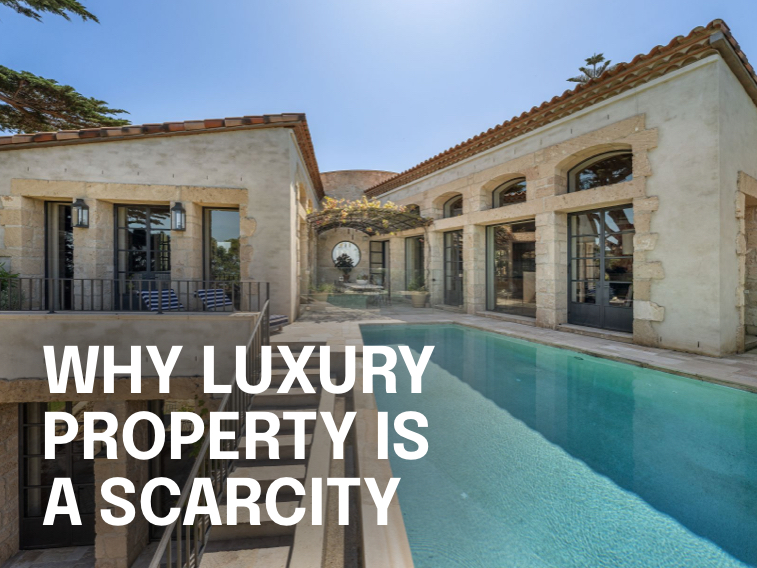Luxury property performance in the spotlight in our annual review as trophy homes continue to set new records


Article
Has acute lack of supply cast a safety net around the top end of the real estate market for the foreseeable future? Here, three experts offer their take on the economic, cultural and psychological factors influencing the availability and pricing of Australia’s rarest residences

Despite the cooling climate across Australia’s mainstream residential market, the luxury segment is setting its own temperature. While there are several reasons why the top end performs at its own pace, the extremely tight supply of ultra-exclusive property is a key driver.
Local luxury real estate volumes simply cannot keep up with the extraordinary demand from discerning buyers who want the best of the best––and have the funds to acquire it. In fact, Australia’s population of ultra-high net worth individuals (UHNWIs) grew by 10.1 % in 2021 to 20,874 people, according to Knight Frank’s Australian Prime Residential Review for Q4 2022. The headcount of Australian residents with a personal net worth of more than US$30m (A$43m) is forecast to grow by a further 30.9 % over the next five years, per the Knight Frank Wealthy Sizing Model.
Though capital growth for prime property (considered the top 5% of residential prices), fell by 1.2% in the third quarter of 2022, it was still up 6% year on year. So, while real estate values across the board are recalibrating post-pandemic, the severe undersupply at the pointy end of the market is set to keep prices buoyant. In Melbourne, sales volumes decreased in the September quarter by 36.1% to just 156 luxury properties, while in Sydney that figure trended down by 26% to 705 homes.
Offering some insight into the current market drivers, Mark Browning, head of Head of Valuations at NAB, says that Australia’s luxury property market runs its own race because it is not impacted by the same external economic factors as general real estate. “It’s really an independent market and is more influenced by executive salaries, share markets and other types of investment classes that don’t tend to influence mainstream property,” he explains. “And ultra-high net worth individuals are typically not leveraged––or at least not particularly highly leveraged––if they’re buying these types of trophy homes.”
He continues: “Because it’s such a different market, the last few months it has proved to be stronger than the wider property market, particularly with offshore interest returning. Combine that with the scarcity of quality listings and it all adds to pricing pressure in that space.”
While interest rate rises have had a direct correlation with falling prices throughout the broader residential scene, Browning says the actions of the RBA are less likely to drive negative sentiment in the upper echelon.
“It would create more of an effect if interest rates were to impact the earning capacity of these buyers; if the companies they are leading or their investments were impacted heavily by interest rate movements,” he suggests. “If the share market takes a massive hit, for example, then you could arguably see some softening in luxury property prices.”
Another trait unique to the luxury market is the imbalance in the transaction process, says Kay & Burton managing director Ross Savas. Essentially, when UHNWIs buy a property, it is not a given that they will be letting another property go at the same time.
“Years ago, we’d sell a house and those buyers would list their home, so another property would enter the market. Vendors might change to smaller land or a bigger home but they were still moving around in the top end. Today we’re getting expats and overseas buyers coming in with nothing to sell, or those who might be buying multiple homes for multiple generations of their families. The result is there’s no longer the stock to replenish that section of the market, which only adds to the scarcity, competition and exclusivity,” Savas explains.
The typical reasons behind buying and selling might keep supply rolling along in the wider property market, but the same incentives are often missing at the top. When the average Australian wants to upsize, downsize, even make a sea or tree change, they simultaneously become a motivated seller. When it comes to wealthier homeowners, there is no motivation to let go.
Savas adds: “They don’t want to sell, they don’t need to sell, so they don’t. People choose to sell, and that’s why there’s always a limited supply of these trophy properties, especially in Melbourne.” In this context, he says, no offer is too good to refuse. “I’ve seen clients offered 25% more than their property is worth by buyers willing to pay big money, but these owners still don’t want to sell. They love their homes too much; they’ve had birthdays and weddings there and are not willing to give up those memories for any sum.”
In his experience, two common themes drive most prime property transitions today; “Every buyer is different but most want the same two things: quality and location. This means ease of living and being surrounded by great amenity like restaurants, parks and sought-after schools.” He says today’s buyers also want the finished product so they can move straight in. “It’s not just because building costs have gone through the roof, it’s more about time––the time it takes to get plans approved, the time it takes to get the right team together,” he explains. “Sourcing a good plumber, electrician or architect is like finding hen’s teeth; they’re all booked up for 12 months or longer.”
Finding a move-in-ready residence is especially important for regional buyers, according to Liz Jensen, director of Kay & Burton Portsea, as the trade shortage can be more of a challenge outside the cities.
“These buyers want the property perfectly presented in every way,” she says. “They don’t want to be renovating or making decisions about tiles and carpets; they’ll wait for the property that’s ready to move into on settlement day.”
If metropolitan Melbourne has tight supply in the top end, then regional Victoria’s prize homes are even more scarce since the pandemic-induced flight to the country.
“The hunt for the perfect trophy country house can be very limited because there just aren’t many and they don’t come up very often,” Jensen explains. “And when they do come up, sometimes they’ve been held by the same family for years, so may not be particularly well finished or turnkey ready.”
Her team has been busy assisting the increased number of buyers who turned their attentions to the Mornington Peninsula during the pandemic because of limits on international travel and a desire to have a permanent place for regular family getaways.
“During this period, wealthy homeowners in Melbourne discovered just how important family is. After spending more quality time with their kids and grandkids, the idea of a luxury home by the beach became very attractive,” she explains. “The peninsula is famed for its prestige properties, but at the maximum buying level we’re lucky to see one every year or two. There really does seem to be fewer on offer now than in previous decades because the buyers of today are accumulating wealth faster and therefore able to hold property longer.”
By Kirsten Craze
The information contained in this article is gathered from multiple sources believed to be reliable as of the end of February 2023 and is intended to be of a general nature only. It has been prepared without taking into account any person’s objectives, financial situation or needs. Before acting on this information, National Australia Bank Limited ABN 12 004 044 937 AFSL and Australian Credit Licence 230686 (NAB) recommends that you consider whether it is appropriate for your circumstances. NAB recommends that you seek independent legal, financial and taxation advice before acting on any information in this article.
© National Australia Bank Limited. ABN 12 004 044 937 AFSL and Australian Credit Licence 230686.